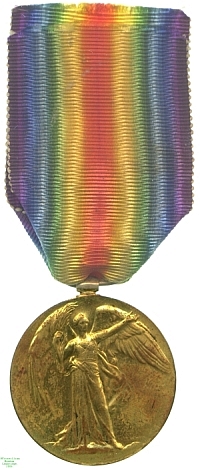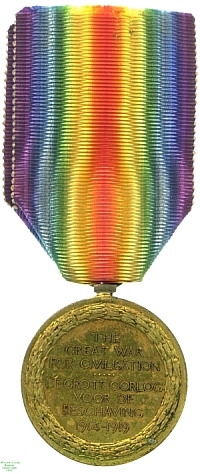Allied Victory Medal 1914-1918 (South African), awarded to Driver A. Karsten, 1919

Obverse, Victory with a branch in her right hand and her left hand held high |

Reverse, inscription in border |

Obverse, Victory with a branch in her right hand and her left hand held high |

Reverse, inscription in border |
When the Great War of 1914-1918 had ended, there was a genuine feeling among the victorious Allies that their military efforts had been instrumental in preserving modern civilization, and this and the united spirit of the Alliance were commemorated in a combined issue of medals to those who had seen active service during the conflict. 13 nations in all issued a variety of this medal; all shared the rainbow ribbon and suspension, and all but the Japanese, who lacked a comparable symbolic figure, used a form of Victory on the obverse and a legend on the reverse.
Most Dominions of the British Crown awarded the British issue of the medal, unnamed as were those, but South Africa struck its own bilingual version, whose examples were engraved to their recipients. This one is inscribed to Driver A. Karsten of the Cape Auxiliary Horse Transport Corps, to whom it was presumably awarded in 1919. Lester Watson bought his medal from the London dealers Baldwin at some point before 1928.